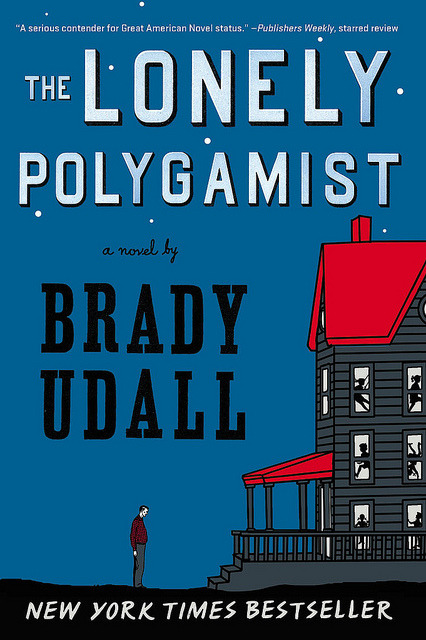(Do you have young readers in search of something news? Book Monkey Sydney, a fifth grader, reviews The Mysterious Benedict Society, the first book of a series that aims for young readers seeking interesting and challenging novels.)
“Although
he was only eleven years old, he was quite used to figuring things out for
himself.” This line hooked me into The Mysterious Benedict Society by
Trenton Lee Stewart. It reflects the main idea of the book, which is about four
children who must solve a problem using their talents.
The
protagonists of the story are Reynie Muldoon, a really smart orphan who excels
at solving riddles; George Washington, a runaway who goes by “Sticky” because
everything he sees “sticks” in his head (wow!); Kate Wetherhall, a talented,
athletic girl who carries a bucket full of useful tools (cool!) and whose
mother died and father disappeared; and Constance Contraire, a stubborn
two-year-old orphan (sound like anyone I know?).
The
antagonist of the story is Ledroptha Curtain, a dangerous inventor who founded
the Learning Institute for the Very Enlightened (L.I.V.E.), which is the
setting of the book, and who invented the “Whisperer.”Mr. Curtain and his
invention are the obstacles that the children must overcome in the climax. The
Whisperer is a high-tech gizmo that sends out messages through children that
piggyback on TV, radio, and phone signals and then are transmitted to the
masses that use those devices. Mr. Curtain’s intent is to use the messages to
change peoples’ feeling towards certain issues.
The
L.I.V.E. is a free boarding school where the lessons are not about math or
reading, but about personal hygiene and the evils of government. If children
excel in their classes, they might be promoted to the rank of “Messenger.” The
Whisperer soothes the Messengers’ fears, as long as the Messengers send out
messages. Mr. Curtain needs children to send his messages because they slip
into people’s minds unnoticed, whereas, if he sent them, people would
notice.
The
book starts out with Reynie, Sticky, Kate, and Constance separately responding
to an advertisement in the paper offering children “special opportunities” if
they pass four complicated tests. The tests were created by a Mr. Benedict, who
needed four smart children to go to L.I.V.E. as his secret agents and stop Mr.
Curtain from implementing his evil plan. Mr. Benedict is Mr. Curtain’s twin
brother, but he is very kind. Mr. Benedict informs them about Mr. Curtain and
the messages, but doesn’t know how they’re sent. Then he tells them that they
are to go to L.I.V.E. to be his secret agents so they can find out how Mr.
Curtain is sending the messages.
A
few days after the children arrive at L.I.V.E, the conflict arises. The
children realize Mr. Curtain has boosted the power of the messages so they can
be transmitted directly to the masses without the need of electronic signals.
Reynie and his friends realize they need to hurry up and become Messengers.
This moves the story along in a good way because it helps the children speed up
their mission and become Messengers. Once he becomes a Messenger, Reynie
realizes why the Whisperer is so loved by the Messengers: it soothes all their
fears and gives them an astonishing sense of well being.
The
next day, the children realize that Mr. Curtain can now record Messenger
sessions. This means that he can broadcast messages around the clock, even
without someone in the Whisperer. Launching an investigation, they find Mr.
Curtain’s secret office, and also find out that he plans to take over the world
with his Whisperer. Typical
evil-genius-takes-over-the-world-and-needs-to-be-stopped plot.
The
children hatch a plan to thwart Mr. Curtain, but things start to go awry.
First, the boys become trapped in a room with Mr. Curtain. Sticky starts to
resist the Whisperer but fails. Then, Reynie alerts the girls to their
predicament by the children’s secret code, but some of Mr. Curtain’s henchmen overhear
the message and catch up with the girls. During the fight that follows,
Constance the toddler, whose strength is her stubbornness, slips into the
Whisperer. She resists it so much the machine is baffled. The conflict is
resolved when Mr. Benedict and his assistants arrive and rescue the children
and disable the Whisperer.
The
ending was awesome, but I can’t give it away, so read the book! Since this is
part of a trilogy, we know the happiness will be short-lived. Whew. More danger
coming!
The
theme of this book is friendship. The four children all showed love and
friendship towards each other throughout the book. I learned that friends are
family, even if you don’t share blood. I thoroughly enjoyed this book because
of the intriguing characters, interesting plot, and fascinating setting. I
highly recommend this book to anyone who enjoys seeing children fixing
adult-created problems (and making them look dumb in the process!).
Next
up – I will tackle The Son of Neptune by Rick Riordan.
SFM


